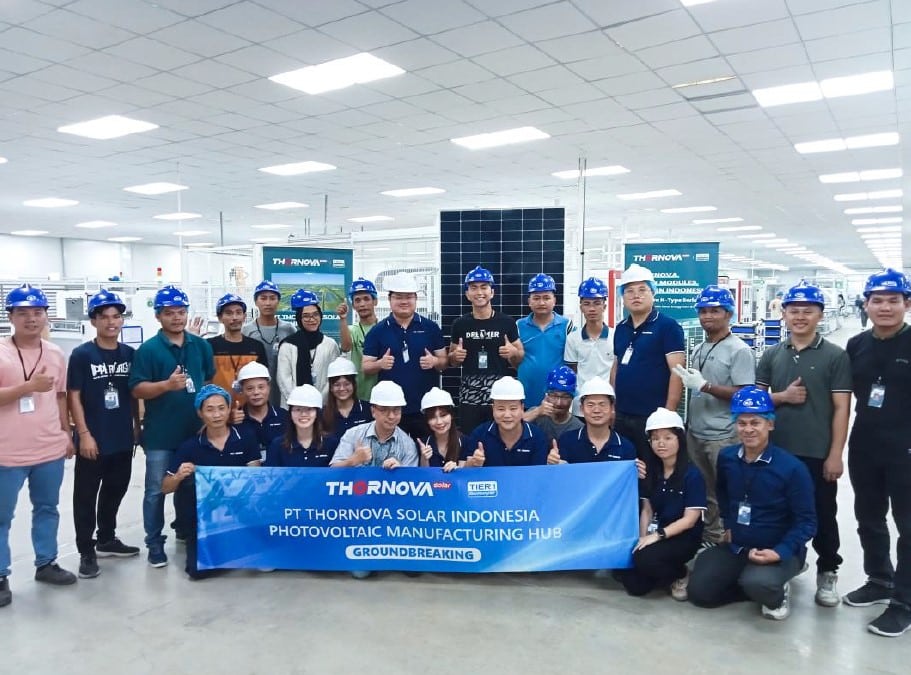Import tariffs have lifted, but don’t sleep on a diversified solar module procurement strategy

You could almost hear the collective sigh of relief in June from residential solar installers. Unable to justify inflated import costs as a result of the ongoing investigation into Chinese solar manufacturers, many installers were nearly driven out of the business altogether.
So, when President Biden waived foreign solar tariffs from Vietnam, Malaysia, Thailand and Cambodia for 24 months – a move that impacts around 80 percent of domestic imports – solar installers across the country began to revive postponed and canceled projects.
Profit margins no longer squeezed by impossible tariffs, it could be easy for installers to settle into complacency over the next two years. But that would be a mistake. Now is the time – while business is booming – to examine the efficiency of your operations and eliminate compliance issues that could halt operations altogether once the tariff break comes to an end.
What’s the easiest way to do that? Diversification.
Here are three best practices to follow when stocking your warehouse:
Mix up your inventory
You likely have a favorite module, a tried-and-true brand, that you go back to time and again. In your eyes, the company has never steered you wrong, and you like the power class offered. That’s great. When I was in charge of companies that were doing a lot of solar installs, we certainly gravitated toward a few modules from a couple of brands. But the key here is to have more than one go-to module.
Power class | My advice is to find three companies you like that offer similar modules all in the same power class. Do you sell 375-watt units? Great. Find three modules that fit the bill. Why? The raw materials or even the panels themselves come from Southeast Asia. By diversifying your product mix, you make it more likely that production delays, raw material slowdowns or even shipping issues for one company won’t have a huge impact on your business.
Component specs | Of course, it’s not as simple as picking the same power class. You’ll have to do a little more homework. For starters, take a look at the metal frames that go around the glass. These specs need to match across your three products (or at least be very similar) so your crews don’t run into installation issues. There are also the frame clips to consider, the wiring that runs through the back of each panel, and even the module cables, which should all be a similar length.
Product warranty | Finally, diversify your mix with products that all have a similar manufacturer warranty. We all know that neighbors talk, and if you put one product that comes with a 25-year warranty on one house, outfitting a nearby house with 12-year-warranty panels, you’re going to hear about it.
Deepen your distributor partnerships
Diversity matters in manufacturing and distribution: it’s perfectly fine to use a number of distributors based on your dream list of manufacturers. To maintain your buying power, though, I would suggest only using two distributors. While buying from three or four partners may seem like the safer bet for availability, purchasing from multiple distributors actually lessens your buying power–diminishing the leverage you need to unlock discounts and preferentialservice.
When interviewing new distributor partners, here’s what I’d do: Drive to a local company to find out what they stock. Get to know them. Develop a strong relationship by selling residential customers the brands they have on hand. Soon, you won’t just be arepeat customer, but a friendly, familiar face.
Here’s why this works: When you’re a new client, distributors don’t order based on your needs. However, once you establish credibility (i.e. by using the same distributor for a dozen projects), they will start asking what you want.
Once you’ve developed these relationships, split your product mix between the two distributors. This tactic helps ensure you always have access to the products you need. You can also use the companies to compare pricing. If you’re a nationwide installer, make sure one of your distributors has multiple warehouses across the country.
Don’t sleep on domestic manufacturers
It’s no secret that the top five worldwide producers are located in Southeast Asia. Given the current political climate, however, it’s not wise to rely solely on those manufacturers.
Selecting one producer in Asia is fine, but for optimal results, my recommendation is to expand the search to India and look to one of the U.S.-based manufacturers to round out your supply chain.
Partnering with a trusted U.S. manufacturer gives you flexibility when port congestion and surging tariffs return to threaten international supply chains. And remember: you now have three modules from three manufacturers; there’s no need to evenly distribute them among projects. You will, however, want to sign a supply agreement with your distributors.
Bringing all the pieces together
While the combination of these three tactics is the recipe for a winning supply chain strategy, substantial shifts in sourcing require time and great communication.
Once you’ve implemented all of these strategies, it’s important to consider the needs of the rest of your organization: Does your sales team need additional product training along with new spec sheets? Is your team properly equipped to communicate with suppliers across a variety of regions? Who will update your website to reflect inventory changes?
It all seems like a lot, I know. But asking yourself these questions now will eliminate headaches down the road. Remember, the tariff holiday won’t last forever. Start diversifying now or when the import fines return, you could find your panels permanently stranded in Southeast Asia.
Erin Clark is the president of Inxeption Energy, where he oversees growth of the company’s solar distribution marketplace. He has served as chief revenue officer at both BIA Controls and SolPad, as well as the CEO of JLM Energy and the vice president of RGS Energy. He started his solar journey in 2005 as managing director of REgrid Power. Clark holds a General Building Contractor “B” and a “C 46” Solar Contractor license in the State of California.




Comments are closed here.